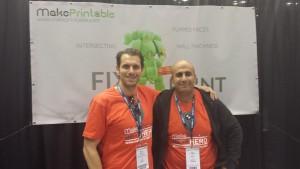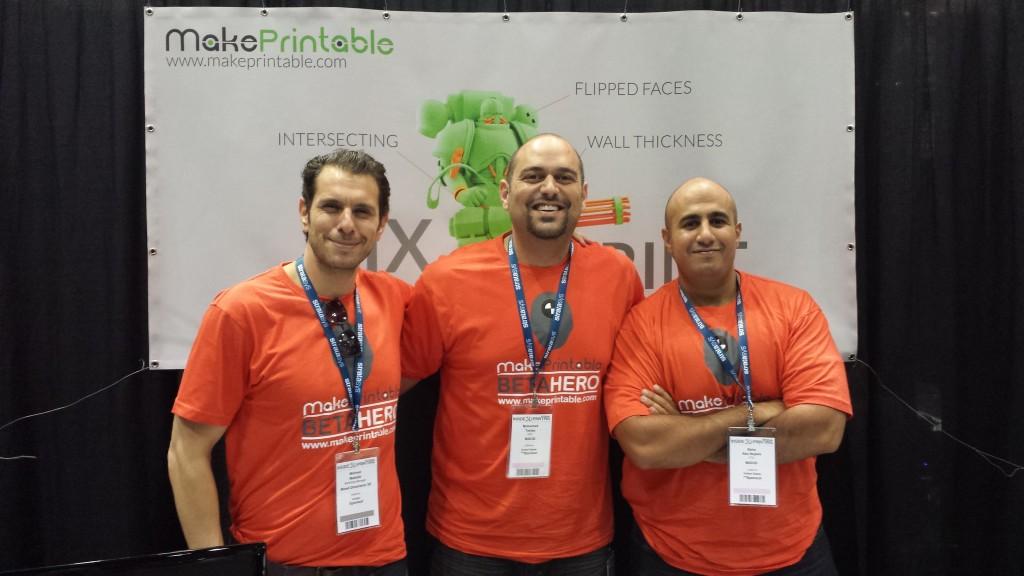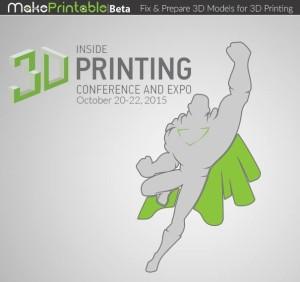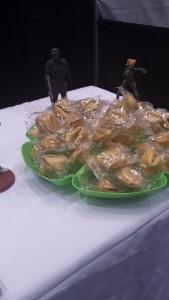 Some issues seem almost universal in the 3D printing space. You get a great idea for a model, or pick one from a design repository like Thingiverse or CGTrader, and the excitement builds as you click “print” to send the files over to your desktop 3D printer, ready to see the finished product in just a little while. Unless… what if the model isn’t viable? Model repair is a frustrating, time-consuming, and often difficult endeavor, as a lot of models made and available for download are riddled with too many errors to be viable print jobs. Walls too thin? Won’t print. Holes in the design? Won’t print. Not enough supports? Won’t print. The reasons may be numerous, but the end result is the same: without the right makeup, a model simply will not print.
Some issues seem almost universal in the 3D printing space. You get a great idea for a model, or pick one from a design repository like Thingiverse or CGTrader, and the excitement builds as you click “print” to send the files over to your desktop 3D printer, ready to see the finished product in just a little while. Unless… what if the model isn’t viable? Model repair is a frustrating, time-consuming, and often difficult endeavor, as a lot of models made and available for download are riddled with too many errors to be viable print jobs. Walls too thin? Won’t print. Holes in the design? Won’t print. Not enough supports? Won’t print. The reasons may be numerous, but the end result is the same: without the right makeup, a model simply will not print.
 The clever team at MXD3D has come up with a solution that, at first glance, seems too good to be true. Their new 3D file and repairing service, MakePrintable, isn’t just easy and impressively fast to use, it’s available now–in public beta. The service launched at Inside 3D Printing Santa Clara, where I also had a chance to catch up with the team to get details right from the source. 3DPrint.com writer Scott also took the time to check out MakePrintable in action, watching some fast repairs happen on the spot–including a two-minute repair job for one of digital artist Laurence Gartel’s works that had had issues for a whopping nine years without a full fix.
The clever team at MXD3D has come up with a solution that, at first glance, seems too good to be true. Their new 3D file and repairing service, MakePrintable, isn’t just easy and impressively fast to use, it’s available now–in public beta. The service launched at Inside 3D Printing Santa Clara, where I also had a chance to catch up with the team to get details right from the source. 3DPrint.com writer Scott also took the time to check out MakePrintable in action, watching some fast repairs happen on the spot–including a two-minute repair job for one of digital artist Laurence Gartel’s works that had had issues for a whopping nine years without a full fix.
MakePrintable, now in public beta, works with more than 25 formats to automate error detection. The entire process was intended to be streamlined and automated, ready for use by all participants in the maker community, from novices to experts.
“The root of the problem,” states the MXD3D team, “is that most 3D content is usually prepared for visual representation and not for 3D printing, leading to the most common 3D printing errors.” They’ve brought MakePrintable to the table to focus on “all common 3D errors like non-manifold, flipped faces, boundary edges, intersecting objects and solidity issues as well as more complicated issues such as wall thickness making 3D model repairing simpler, faster, automatic, and more enjoyable for all hobbyist and professionals.”
When it comes from translating what’s on the screen of a computer to what goes into and then comes off of a 3D printer, many designs are simply not optimal–and for the most part solutions remained in the user’s hands, which is a tricky proposition for those either newer to the design scene or simply pressed for time to get a design complete and made.
“We aim with MakePrintable to remove all the headache and hours, if not days, of manual labor needed to bring any 3D object to the physical world,” said CEO and Co-Founder Muhannad Taslaq.
MakePrintable’s algorithms take the work on for the user, cutting substantially on time required to find any number of errors and to fix each in term. The cloud format of MakePrintable is integrated with Shapeways, Blender, SketchUp, Box, Google Drive, and more–and the team behind it is hard at work to expand the existing network and add partnerships.

L-R: Michael Makdah (Marketing Manager), Muhannad Taslaq (CEO/Co-Founder), Baha Abu Nojaim (CTO/Co-Founder)
When I sat down with the MXD3D team at Inside 3D Printing, they were able to shed even more light on MakePrintable.
“Users like our platform because it’s simple,” Marketing Manager Michael Makdah told me. “That’s our edge. We simplify. It won’t take more than two minutes to set up.”
The team got their start in 2015, via the Alchemist accelerator. They set out to solve the common problem of a “huge market where not all content is printable,” as the designs are frequently “not printer aware” if sent directly from a popular design repository–where 3D content is made for screens–to a 3D printing service, where designs must be viable and error-free. They had also noticed that some users tended to blame the material they were printing with, rather than the design file, placing failure blame at the wrong door.
“We want to bridge between content and the physical model,” CTO and Co-Founder Baha Abu Nojaim explained to me.
Taking a full spectrum approach, MakePrintable can fix files and ready them for creation on any machine out there, from FDM to DLP. This adaptability and broad range of use is set, the team told me, to add value to market services. Their aims are to save time, material, and human effort–to “become the post-script of 3D printing.”
To prove their use on the spot–as Scott saw with Gartel’s art, and other pieces–MXD3D offered a demonstration at their booth. You could see your future with a custom-made fortune cookie (which were actually really tasty, and my cookie definitely saw MakePrintable in my future!) and then try the software. If you could fix a file, you were rewarded with a t-shirt showing MakePrintable’s fun crash test dummy or bug fixer logos. That’s some confidence, offering a test like that on the spot–and it seemed well in place, as the platform truly doesn’t take long to learn or use to fix wall thickness and other common bugs.
You can check out MakePrintable’s public beta here–including their hero beta testing–as well as some of the testimonials from their tests so far. Have you tested out this new software? What did you think? Let us know in the MakePrintable forum thread on 3DPB.com.
Subscribe to Our Email Newsletter
Stay up-to-date on all the latest news from the 3D printing industry and receive information and offers from third party vendors.
Print Services
Upload your 3D Models and get them printed quickly and efficiently.
You May Also Like
Havaianas Collaborates with Zellerfeld to Launch 3D Printed Flip-Flops
The shoe of the summer is undoubtedly the flip-flop. Easy on, easy off, your feet won’t get sweaty because there’s not much material, and they’re available in a veritable rainbow...
UCLA Researchers Develop 3D Printed Pen that May Help Detect Parkinson’s Disease
Diagnosing Parkinson’s disease is difficult. Often, early symptoms of the progressive neurological condition may be overlooked, or mistaken for signs of aging. Early diagnosis can help save lives and improve...
Printing Money Episode 30: Q1 2025 Public 3D Printing Earnings Review with Troy Jensen, Cantor Fitzgerald
Printing Money is back with Episode 30, and it’s that quarterly time, so we are happy and thankful to welcome back Troy Jensen (Managing Director, Cantor Fitzgerald) to review the...
Heating Up: 3D Systems’ Scott Green Discusses 3D Printing’s Potential in the Data Center Industry
The relentless rise of NVIDIA, the steadily increasing pledges of major private and public investments in national infrastructure projects around the world, and the general cultural obsession with AI have...

































